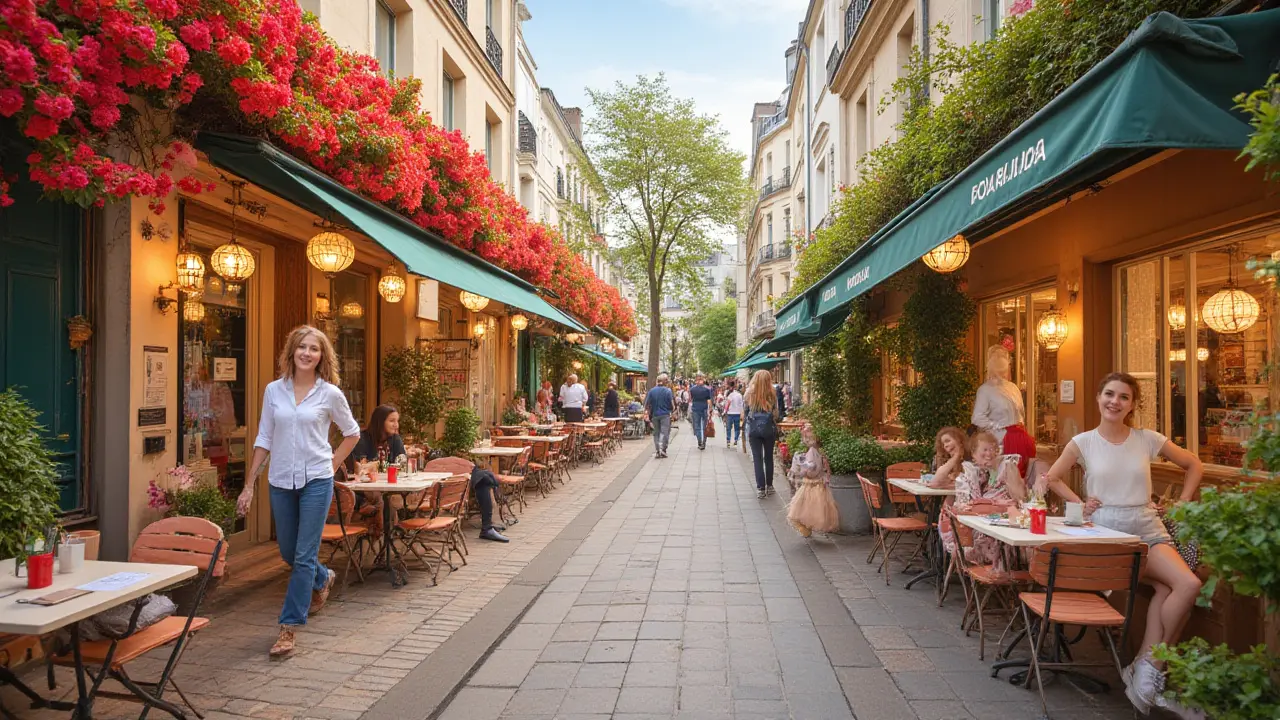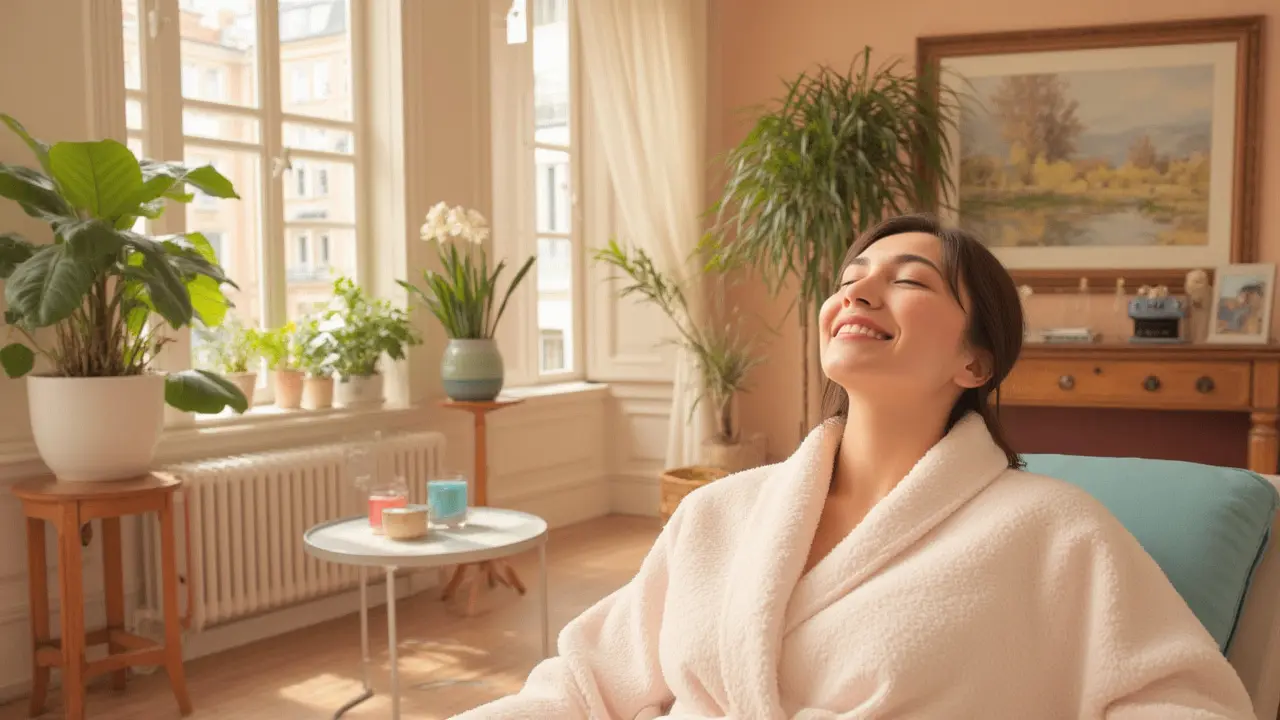Think about the last time you truly relaxed. Not just scrolling your phone in bed or zoning out in front of Netflix, but actually feeling your muscles let go and your mind drift into that rare, weightless zone. Weirdly enough, most people only get there while on vacation—or never at all. Yet, there's a timeless, hands-on shortcut: a full-body massage. There’s a reason this practice has survived for thousands of years, across countless cultures. Whether you’re a Paris local juggling packed schedules or a curious traveler with tired feet, it might surprise you how much this simple ritual can flip your day, your week, even your whole mood.
How Massage Works Its Magic
Let’s get straight to it: what exactly is going on when someone massages your body? The science is more interesting than you might guess. A trained massage therapist doesn’t just knead your muscles for the sake of it—every stroke, every squeeze, is aimed at specific responses within your body. Pressure and movement help dilate blood vessels, kickstarting better circulation. This means more oxygen and nutrients for tense areas, plus faster removal of metabolic waste. Researchers at Cedars-Sinai Medical Center found that just a single session of Swedish massage can drop cortisol (a stress hormone) by up to 31% and boost lymphocytes, which are critical for your immune function. So that zen feeling? Not just in your head—it’s in your blood.
Pausing for even an hour isn’t just self-indulgence; it hacks your brain chemistry. Massage prompts your body to release endorphins (those happy chemicals that lift mood) and serotonin, while tamping down the production of stress-related hormones. Your nervous system basically flips from fight-or-flight to rest-and-repair mode, which is great news for anyone plagued by nervous tension or poor sleep. Have trouble drifting off? Multiple studies have tracked improved sleep quality after regular massage, especially deep-tissue or Swedish techniques targeting the back and shoulders.
Let’s talk knots. Everyone holds stress differently—shoulders, lower back, even hips—and chronic muscle tightness is almost a modern epidemic, thanks to long hours on laptops and phones. Regular massage works out those stubborn knots, helping muscles return to their natural, relaxed state. If you’re dealing with headaches, tension migraines, or even sinus congestion, you might be shocked at how much simply working on your neck and scalp changes things.
Here’s a quick look at what happens in your body after a full-body massage session:
| Benefit | How It Happens | Percent Change (avg.) |
|---|---|---|
| Reduced Cortisol | Lowered stress hormone | -31% |
| Increased Serotonin | Boosted mood | +28% |
| Improved Immune Markers | Higher lymphocyte count | +7% |
| Muscle Relaxation | Less stiffness/tension | n/a (subjective improvements) |
| Better Sleep | Deeper REM cycles | varies |
Not every technique fits every person. Swedish massage is gentle and best for relaxation; deep-tissue hits persistent tension in deeper layers, great for chronic aches. Sports massage targets areas stressed by repetitive movements or injury, and hot stone is soothing for general aches. Many Paris spas offer French-specific styles combining elements like aromatherapy and reflexology for a twist you won’t find elsewhere.

Why Massages Matter in Your Everyday Life
You might think massages are only for special treats: a birthday, a splurge-day after too much work, maybe a couples' getaway. That’s a myth. There’s an ongoing conversation in the wellness field about viewing massage more like exercise or nutrition—a regular part of your routine, not a guilty pleasure. Why? It produces noticeable, cumulative benefits. Imagine feeling that vacation calmness every week, right in your regular life, not just in a pricey hotel spa. The key is consistency, not luxury.
Busy lives pile up stress, often in sneaky, physical ways—shoulder pain from hours of typing, a stiff neck from screen time, or lower back knots from lugging heavy bags around Paris. Even mild anxiety or mild depression can show up as real, physical aches. A body massage targets these aches while also nudging your brain to unwind. If you’re a gym-goer or someone who loves running along the Seine, regular massages can speed muscle recovery, help you train better, and lower injury risk. According to research from Buck Institute for Research on Aging, massage reduces inflammatory markers in muscle tissue after exercise—so you actually recover quicker, with less pain.
Many digital natives are learning the hard way that screens mess with posture. Ever looked in the mirror after a long week and noticed a hunched, tired look? Massage therapy may help undo that. Skilled therapists can gently realign muscle fibers, promote better tissue elasticity, and get circulation flowing into areas that barely move during desk work. Growing numbers of parisians use massage the same way they use good skincare: as functional, ongoing maintenance.
Trying to boost your mood or break a slump? Massage isn’t a “no bad days” miracle, but it can give your brain the nudge it needs. Serotonin and dopamine, both linked to happiness, get a natural kickstart from scheduled sessions. Try it weekly or bi-weekly for a few months, and you’ll often notice a lasting shift in your baseline mood—even people who battle seasonal affective symptoms or regular fatigue see fewer ups and downs.
Let’s not pretend every effect is chemical or structural. There’s something deeply human about safe, professional touch in a screen-focused, hands-off world. In French culture, there’s still some shyness around regular massages, but that’s starting to lift as the mental health revolution reaches the city. In Paris, boutique studios often blend massage with music, mood lighting, and calming scents, turning an ordinary hour into a total sensory reset. Some even offer late-evening or early-morning appointments: perfect when life gets hectic.
If you want to make massage a real part of your life, here are a couple of easy tips for Paris locals and visitors alike:
- Don’t wait for pain to escalate—book in advance, and treat it like an important appointment.
- Mix and match techniques to fit your mood and body’s needs each month.
- Hydrate before and after. Your muscles and tissues respond best when you’re well-watered.
- Share your preferences. Be honest with your massage therapist about pressure, sensitive spots, or any medical conditions.
- Try new places. Paris is packed with lovely spas; wander outside your usual neighborhoods—even small studios in quieter arrondissements can surprise you with their expertise.

Making the Most of Massage in Paris
Paris may be the city of light, but it also comes with fast-paced days that leave the body and mind spinning. No shame in getting a little help hitting pause. The French wellness scene has blossomed these last few years—you can find everything from ancient Shiatsu to modern lymphatic drainage, each with their own focus and flavor. Some high-end Paris spas now include body massage with aromatherapy from local botanicals like lavender and rosemary (proudly French staples) for an upgrade. And if you’re after more luxury, massage packages now often come with facials, reflexology, or access to hammams and saunas—all in one visit.
The right environment makes a huge difference. Top Paris therapists pay close attention to details: heated tables in winter, light natural oils for summer, silence or custom-curated music playlists to help you slip into relaxation. You’ll notice the experience goes from "nice" to truly restorative when the little touches are right. Many studios use locally sourced products or organic blends if that’s something you care about. If you’re worried about language barriers, don’t be—most therapists in city centers speak at least basic English and are trained in non-verbal communication, so your needs are heard even if your French isn’t perfect.
First-timers sometimes feel a bit self-conscious, especially if they're not sure what to expect. Quick tip: most spas provide everything you need (robes, slippers, towels), and you can always ask for more coverage if it helps you relax. Never be shy to communicate during your session; the therapist’s main job is your comfort and safety.
Gift-giving in Paris just got better, too. Gifting massage packages is a growing trend for birthdays, anniversaries, or even housewarming presents—because who really needs more scented candles? Think about it: an hour of pure decompression often means more than most gifts you'll unwrap. Even local workplaces are catching on; some now offer subsidized massage sessions to help employees cope with stress, sick days, and burnout.
If you’re curious about trying a body massage for the first time or exploring it as a new routine, here’s a roadmap:
- Decide what you want: stress relief, pain management, or simply relaxation?
- Pick a style: Swedish for beginners, deep-tissue or sports if you’re active, or try something new like Thai for stretching.
- Check reviews online or ask for recommendations—Paris is full of wellness insiders who’ll point you to hidden gems.
- Book a session during a quieter time if you want extra peace (weekday mornings or late evenings often work well).
- Clear your schedule afterward so you can soak in that post-massage glow without rushing back to chaos.
Keep in mind—massage is not a magic cure for everything, but it’s one of the few “treat yourself” strategies with real, documented benefits. On tough days, that might be the only nudge your mind and body need to flip the switch and start feeling better. In a city known for both style and stress, it’s hard to think of a more Parisian way to take care of yourself.






